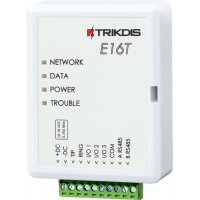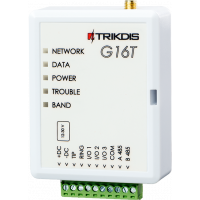Comparison Table of TRIKDIS Communicators for Alarm Systems
- 01.04.2025
This table organizes TRIKDIS communicators based on two main criteria. The horizontal axis represents the type of connection to the alarm control panel, while the vertical axis shows the type of external communication method.
(The table does not include communicators used for fire alarm systems or devices operating via radio communication.)
Types of connection to the alarm control panel
- Special communicator – Direct connection to the alarm panel via data bus or serial port.
- Universal communicator – Connection to the alarm panel via traditional telephone line (TIP-RING).
- Dual-connection communicator – The device supports both data bus/serial port and telephone line (TIP-RING) connections. A distinguishing feature of these devices is their black casing.
Types of communication
- Cellular – Depending on the built-in modem, the device may support 2G, 3G, or 4G. All devices are backward compatible, meaning a 4G communicator can also operate on 3G or 2G/GPRS networks.
- Ethernet – The device connects to the network via an Ethernet (LAN) cable, typically using a wired internet connection.
- Dual-path, Redundant – The device supports both Ethernet and cellular connections. This ensures high bandwidth through wired internet, while also providing a backup connection via mobile network in case of power outage or service failure.
Alarm communicators (IP modules)
Special communicator |
Dual-connection communicator |
Universal communicator |
|
Ethernet |
E16 | E16T | |
Dual-path – Redundant |
GET | ||
Cellular |
G16 | GT, GT+ | G16T |









